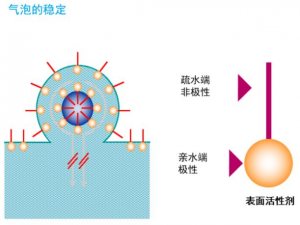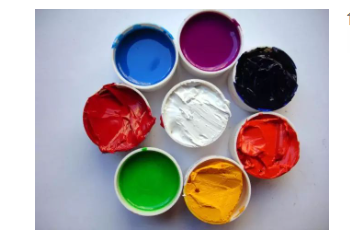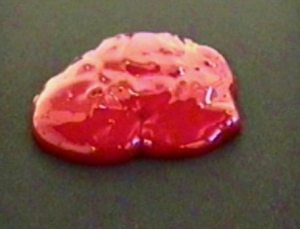Defect analysis of flat screen and rotary screen printing
Printing defects on flat (circular) screens are ever-changing. People summarize them into several types, distinguish them during finished product inspection, and name them according to the phenomenon. In fact, defects rarely occur reproducibly. Although the same phenomenon occurs, it is not necessarily the same cause. Here we mainly analyze the most common defects, and it is impossible to include every defect. It is just a possible analysis of defects and provides an idea for analyzing defects.

1. Pressing: the outline of the pattern is unclear, and the contact surface of the complex color is blurred
A. Cause:
a. It will be blurred only if there is pressure. When the wet cover is used for wet printing, the latter version will be blurred by the previous version.
b. The connection port is severely compressed due to repeated pressure.
B. Solution
a. The pulp should be collected cleanly and a suitable scraper (hardness) should be used.
b. If possible, keep the distance between the plates, and if necessary, heat and blow air in the middle.
c. Correctly arrange the position of the mesh tube or pattern.
d. When handling the pattern opening during flat screen printing, try to keep it in and out as little as possible.
e. Fill the edges of the flower frame.
2. Paste: Paste the fabric edges

A. Cause:
a. The width of the gray fabric is uneven, first narrow and then wide, or the patches are not on the same straight line, causing the paste at both ends of the rotary screen or flat screen to be printed on the guide belt, and then stick to the back of the next rotary screen or screen. Then it prints to the edge of the next version of the fabric, causing a blurred edge.
b. The edge suction device fails and the fabric edge is not in a straight line.
c. The width of the circular screen or flat screen after sealing and edge sealing is greater than the width of the gray cloth.
B. Solution:
a. The gray fabric is rearranged, and the width of the machine printing cloth entrance door is consistent. The two ends of the screen plate are edge-sealed according to the cloth sealing width and printing position.
b. When attaching the cloth, keep it equidistant from one side of the guide tape without drifting.
c. The scraper printing width should be at least 5cm larger than each side of the cloth seal.
d. The edge suction device is in good condition.
3. Melting: the outline of the flower shape is blurred, and the color of the pattern penetrates towards the fiber direction
A. Cause:
a. The guide tape is not dry after being wiped clean, and there are watermarks on the gray fabric after it is pasted.
b. The viscosity of the color paste is low, the dye concentration is extremely concentrated, the printing paste absorbs too much or the amount of hygroscopic agent is large, and the original paste has poor water retention.
c. Printing the pattern before it is dry after washing causes the first few plates to melt.
d. The surface moisture of the mesh tube was not spread evenly after washing
B. Solution:
a. Check that the wiper device of the guide belt washing tank is in good condition.
b. Choose a paste with good water-holding properties. Check that the dosage of the process prescription is reasonable (saturation amount of dye, dosage of additives), and the slurry should not be left for too long.
c. Wash the pattern and blow dry it before use.
d. Use a sponge mop to mop the mesh tube evenly before putting it down.
4. Scraping in: The heterochromatic slurry is scraped in, resulting in uneven color light
A. Cause:
a. Dark flowers with large surface and lots of pulp.
b. The edge of the flat net fence is not good, and the pulp is brought into the pattern from the guide belt
B. Solution:
a. Change the position of the pattern without affecting the recoloration.
b. Try to position the flowers according to the width of the fabric.
c. Collect the pulp and add pulp frequently.
5. Frame printing: Abnormal streaks in the shape of the pattern frame appear on the pattern close to the plate opening
A. Cause:
a. The screen frame is poorly installed and uneven in height.
b. The gap between the screen and the conductive tape is too small.

B. Solution:
a. The screen frame can be slightly raised.
b. Open the circuit correctly when working with flower shapes.
6. Color difference in the first version (uneven squeegee or a certain interval of color shades in the transverse direction of the fabric)
A. Cause:
a. The thickness of the screen or rotary screen photosensitive adhesive is uneven, the pattern exposure is uneven, and there is something wrong with the production.
b. The screen frame is not on the same plane, or is poorly installed.
c. The scraper is loose or jumps when scraping.
B. Solution��:
a. Make a new screen or rotary screen. If it is film-sensitive, you must also check the quality of the film.
b. Press the screen frame flat, but check whether the pattern is out of shape when printing.
c. The height of both ends of the screen installation should be consistent.
d. The scraper is installed in place.
7. Printing of plate connection: The color of the plate connection is embossed or overlapped or separated
A. Cause:
a. The guide belt returns incorrectly.
b. The left and right pressure of the scraper is not adjusted properly.
c. The screen frame is too high from the guide belt, and the screen on the edge is found to be peeled off when scraping.
d. The size of the flower-shaped opening is too large.
B. Solution:
a. Set the guide belt operation return position according to the flower-shaped return position, or check whether the guide belt operation is normal.
b. Adjust the scraper pressure to just the right size for pulping.
c. Adjust the height of the screen.
d. The back of the screen can be partially lined with a fine mesh with large gaps. Correct unreasonable openings.
8. Dinghua (tube) version: the flower color is uneven and has chrysanthemum-like fuzz
A. Cause:
When the pattern is lifted (the mesh tube rolls over), the color paste is pulled up, and the reverse side of the pattern is stained with color paste, which affects the scraping of the next printing
B. Solution:
a. The viscosity of the flower paste is inappropriate.
b. Filter the old pulp before using it or replace it with new pulp.
c. Timely washing of flower plates (mesh tube)
9. Flowering: The flower position is exposed with gray cloth color or poor permeability, like spots in the shape of shark skin
A. Cause:
a. The pattern plate (mesh tube) is blocked.
b. The scraper is improperly selected or the pressure is too small, resulting in insufficient pulping.
c. There are oil stains, wax, etc. on the gray cloth.
d. The flowers in the front set are not dry yet and are sucked up by the reverse side of the pattern plate (mesh tube) in the back set.
B. Solution:
a. The pattern (mesh tube) must be cleaned every time.
b. Choose a good scraper and use appropriate force.
c. To test the capillary effect, restrain the gray fabric if necessary.
d. The distance between the flat screen and the front screen should be appropriately increased if conditions permit.
e. The viscosity of the color paste is inappropriate.
f. The mesh of the screen (cylinder mesh) is improperly selected.
10. Thickness of stems: thin stems have uneven thickness
A. Cause:
a. The screen (mesh cylinder) is produced with thickness defects.
b. The left and right sides of the magnetic table have different magnetic properties. Caused by different printing pressures.
c. The screen is placed unevenly.
d. The pressure on the left and right sides of the scraper is inconsistent, the blade edge is uneven, and the thickness of the scraper edge is inconsistent.
e. Scratching and collecting pulp are not clean.
B. Solution:
a. Check the pattern (mesh tube) carefully.
b. Check the magnetic strength of the magnetic table.
c. Lay the screen flat.
d. Select the scraper and adjust the loading pressure.
e. When replacing the scraper, the blade should be consistent.
f. Adjust the height of the mesh tube according to the thickness of the fabric.